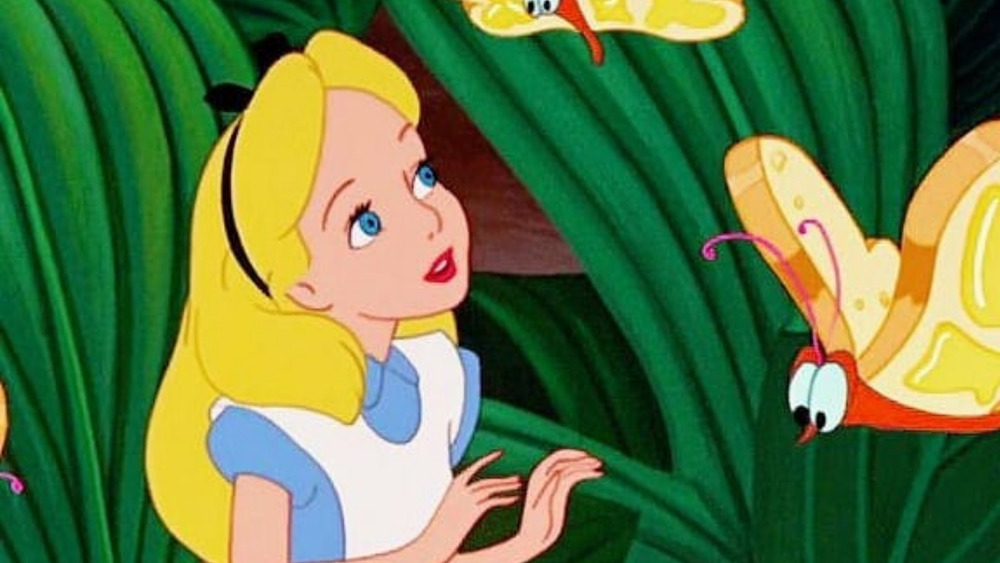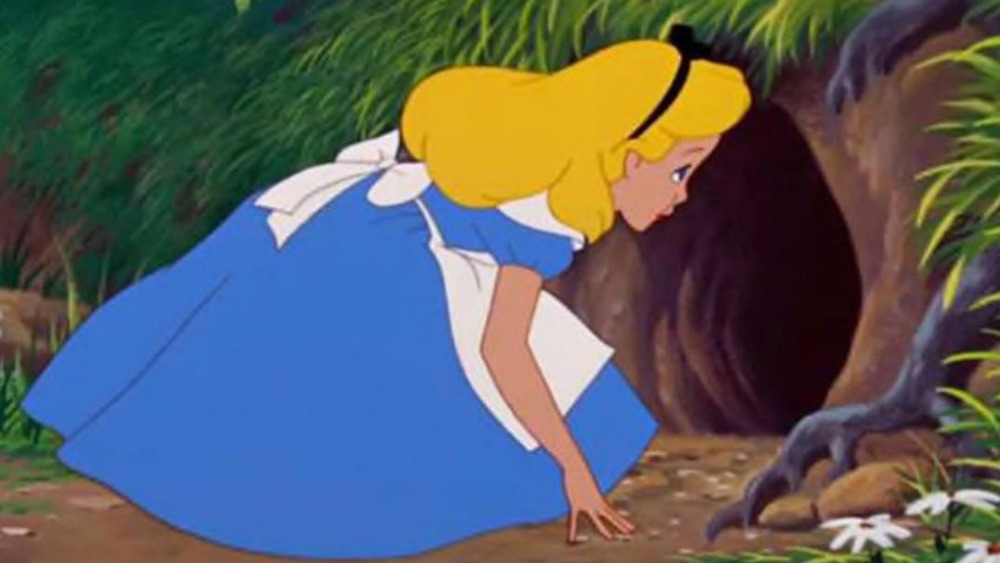Adult Moments In Alice In Wonderland That Kids Don't Notice
In 1951, Walt Disney Productions released Alice in Wonderland. While the animated film was not an immediate success, it went on to become considered a true Disney classic (via The Take).
There have been several other adaptations of this story, originally written by Lewis Carroll, such as a Tim Burton movie in 2010. However, there is just something special about watching the whimsical and colorful Disney version, featuring Alice, the Queen of Hearts, the Mad Hatter, and the Cheshire Cat.
Many are familiar with the setting of Wonderland, the foods that cause Alice to shrink or grow, and the unique creatures and characters she encounters while on her adventure. Still, in this family-friendly tale (which, according to a blog called Rarest Kind of Best, is okay for kids who are ages four and up), there are some deep messages going on that perhaps only the adults catch while watching.
There are actually nods to psychology and philosophy in this Disney flick
An iconic part of Alice in Wonderland is the main character falling down a rabbit hole. To younger audiences, this may seem like the perfect entrance to a one-of-a-kind land. To others, though, this may have seemed like Alice was entering into her unconscious mind (via Medium). Some psychologists, psychiatrists, and psychoanalysts say dreaming (which Alice may very well have been doing) is a way for the unconscious mind to communicate with the conscious mind (via Verywell Mind).
Then, once Alice reached Wonderland, she met the Caterpillar, who asked over and over: "Who are you?!" Was this just a silly question? Or was this a nod to philosophy? Some question the idea of an individual "self," saying the sensation is just a hallucination (via Big Think).
So, yes, it is a thrill to enjoy the songs, scenes, and silliness of this Disney flick. But next time it is on, feel free to think about the science, theories, and wisdom hidden in plain sight!

